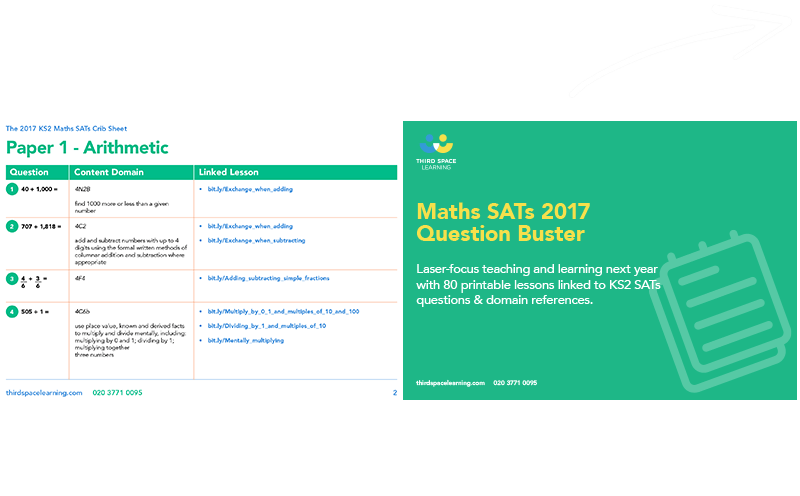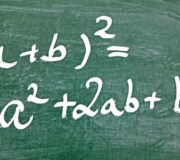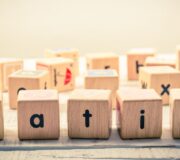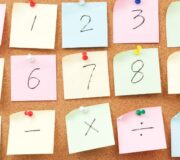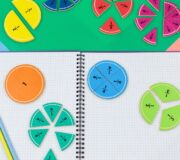KS2 SATs Maths Papers 2017: 15 Point Guide for Year 6 Maths Teachers
Now the KS2 SATs papers 2017 are released from embargo we’ve created a quick bluffer’s guide for Year 6 teachers to the content of the KS2 SATs maths papers 2017: what was in and what was out this year to help you plan your Year 6 SATs revision for coming years.
Even if you don’t feel like reading it now, bookmark this page so you can come back to it next time you’re planning Year 6 Maths revision.
And if you’ve not seen our earlier blog post: KS2 SATs 2017 Review, the Good, the Bad and the Even Better If, it’s definitely worth reading that first.
For more recent papers:
KS2 SATs 2018: Maths Papers Question Breakdown
KS2 SATS 2019: Maths Papers Question Breakdown
KS2 SATs 2022: Maths Papers Question Breakdown
Looking for Maths SATs Practice Papers? Download our 6 Free SATs Papers, including mark schemes and answers! For further SATs preparation, read our article which includes past SATs papers and guidance on how to best use these to support your pupils.
1. Reasoning and Arithmetic KS2 SATs Papers 2017 are no easier than 2016
The level of difficulty to be expected has now been cemented as the second year of papers is published on the new curriculum. In comparison to KS2 SATs 2016, the sequencing of question difficulty slightly changed, and for many, particularly Paper 2 Reasoning may have felt a bit easier, but our view is that overall they’ve stuck to a similar level of challenge. The fact it was our second year on these new National Tests I think meant that there wasn’t such a feeling of shock as in 2016.
As the curriculum becomes “not so new”, preparing your pupils for SATs style questions will become easier. However, it never hurts to have a backlog of SATs practice papers like these 3 free practice Year 6 Maths test papers.
2. New elements of the KS2 Maths curriculum are now appearing
The examiners clearly feel this new content should be fully embedded even though this current Year 6 had only worked with the new curriculum since their Year 4.
Roman Numerals is the most striking example of this. There were also questions that required pupils to think fluently, working with multiple concepts simultaneously which are very much a feature of the new curriculum.
3. SATs Questions on the four operations in context
Knowing how to add and subtract was often not sufficient to gain marks in these KS2 SATs Papers 2017; pupils were required to make a decision on what operation (and in what order) to use on several occasions.
Pupils were required to subtract four digit numbers using formal methods as well as subtracting decimals up to three decimal places. Pupils were also required to subtract fractions with different denominators. These demanded a level of fluency with the operations that some pupils may not have reached.
4. Short and long division KS2 SATs questions cover all Key Stage 2 curriculum
Pupils were not only challenged to divide whole numbers and those involving decimals by 10, 100 and 1,000 but were also required to solve problems involving the relative sizes of two quantities and use division facts to find missing values.
In the Arithmetic Paper, they were required to divide proper fractions by whole numbers on two occasions and were exposed to a range of short and long division questions.
Like last year, pupils were asked to divide a number by 1, indicating that examiners are keen to test whether pupils can divide mentally.
Read more: The Best Long Division Method For KS2: Step By Step How To Teach
KS2 Maths SATS 2017 Question Buster
Download this set of 80 free printable lessons linked to each of the questions from KS2 SATs Reasoning Papers and Arithmetic Paper
Download Free Now!5. More than 50% of the KS2 SATs maths papers 2017 focused on Year 3-5 curriculum content
We’ve said it before and we’ll say it again, they are not just Year 6 SATs.
As part of your revision, it’s crucial to revise key concepts from the other years. Not only is this just good practice to secure foundational knowledge so pupils can tackle the more complex knowledge, but they will lose marks if they’re not up to speed on the earlier stuff.
Hat tip to @MissieBee here for being an early one to point this out.
On THIS year’s maths SATs, more than half (59%) of the Qs were from the y3-5 curriculum. Y3- 7%; Y4- 26%; Y5- 25%; Y6- 41% (all rounded). pic.twitter.com/kugPHFM7IG
— Miss B (@_MissieBee) May 22, 2017
6. Times tables and multiplication facts are in the KS2 SATs Maths Papers already
Is this preparing us for the nationally assessed times tables test? The multiplication questions present in the Arithmetic Paper were not too dissimilar from last year.
There was a need to be confident with times tables as pupils were required to use these facts to multiply one, two and three digit numbers by one digit numbers. The paper then progressed to testing whether pupils could handle multiplying four digit numbers by two digit numbers.
Pupils also needed to be familiar with multiplying numbers by 1,000 and using facts to multiply mentally.
Interestingly, across all the 6,500 pupils we’ve prepared for SATs this year in our 1-to-1 maths interventions, lessons on multiplication and division are still the most popular. Generally this is because teachers appreciate that personalised support and practice can have a huge impact on pupils fluency with these concepts, and that’s what our 1-to-1 tutors can provide. The result of this personalised support is higher scores in KS2 SATs for these pupils.
7. Multi-step problems in the KS2 SATs Maths Papers 2017 combined several concepts or operations
They appeared in several guises. Question 12 in paper 3 is a good example of this. It incorporates both the need to identify an operation as well as fluency with multiplication and division. In this question pupils needed to be comfortable with both multiplication and division in order to be able to check and explain their answers.
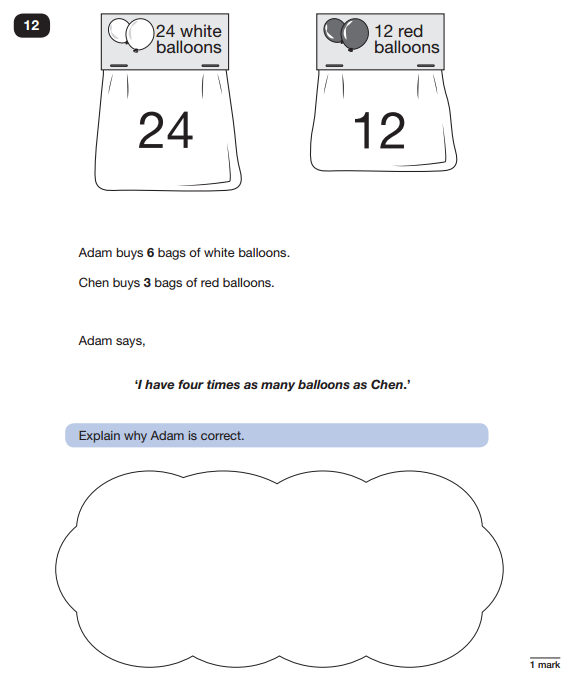
8. It’s time to nail percentages well before KS2 SATs
Problems involving the calculation of percentages popped up three times in the Arithmetic Paper and were present in SATs Reasoning Paper 2017 1. And some of these were complex percentages such as 45% not just 10%. As ever, pupils were also tested on how to calculate percentages that required more than one step to get an accurate answer.
We know that a basic understanding of percentages still eludes many adults despite it being so important in life; make next year the year your school really gets percentages!
This is actually why we deliberately structure our lessons to support pupils towards a complete understanding of percentages, starting with simple percentages before moving on to working with percentages in other contexts.
9. Fractions are being tested in questions across several curriculum domains
Lots of teachers commented to us on the proliferation of fractions questions.
KS2 SATs Papers 2017 Questions included:
- Adding and subtracting fractions with both the same and different denominator
- Adding mixed numbers and proper fractions
- Multiplying pairs of proper fractions
- Knowledge of equivalent fractions
- Recalling and using equivalences between simple fractions, decimals and percentages
- Which shape had been ¾ shaded
Without a sound grounding in fractions of all types, and a clear understanding of what to do when confronted with using one of the operations, pupils would have struggled with several questions across the papers.
10. Mathematical language was important in the KS2 SATs Papers 2017
We know that some pupils struggled in general with the language of some of the reasoning questions (somersaults?) but when it comes to mathematical language we have fewer excuses not to make sure our pupils are ready. This year for example pupils were required to know the meaning of terms such quadrilateral, perpendicular and parallel to have any chance of success in some of the geometry questions.
11. Fewer polygons but triangles in the KS2 SATs PAPERS 2017 for a second year!
Polygons did not dominate to the same extent as in 2016 but children were still required to translate a triangle from one plane to another which many may have found tricky.
Interestingly, on question 13 of paper 3, pupils would only have achieved the mark if they not only remembered what an acute angle was, but also how many sides a pentagon has.
12. Don’t omit your introduction to algebra in Year 6
Two questions in paper 3 asked pupils to express missing number problems algebraically and find pairs of numbers that satisfy an equation with two unknown numbers. In paper 2 question 11, pupils were asked to use simple formulae. This is in line with last year’s papers where pupils had two questions regarding the use of simple formulae.
13. Challenging questions test both concepts and fluency across the KS2 Maths curriculum
The last question on paper 3 demonstrates this point. Having knowledge about 3D shapes and calculating volume is not sufficient, applying such knowledge through a multi-step problem was expected for those pupils who wanted to achieve high marks.
This question may have stumped pupils who knew the areas of Maths in isolation, but were uncertain how to apply it in this context.
And as the last question on a reasoning paper that was difficult to finish within the set time, even if pupils did get there, they may have struggled to process the information at such a late stage.

14. Multi-step problems must be second nature to Year 6 by their KS2 SATs
We recommend exposing pupils really early in their KS2 SATs year to multi-step word problems to help them to become familiar with this style of question. Then, when it comes to looking at strategies for solving word problems in Year 6, they’ve already got the baseline skills and confidence.
In our 1-to-1 maths interventions, pupils are deliberately given challenging questions from very early on, so that we can probe the pupil’s ability to problem solve and reason mathematically for just this reason.
With the tutor there to support them and address misconceptions, pupils build mathematical reasoning in a supportive environment that has been proven to build confidence.
Once your pupils are confident with these sorts of problems they have all the tools they need to start tackling questions such as the one above or this from paper 3:

15. Some surprising ommissions in Maths: what was left out of the KS2 SATs Papers 2017!
- Despite the calculation curriculum strand featuring heavily, there was only one relatively simple order of operations question.
- Nothing on the reading and converting of metric/ imperial units. Different measurements did feature, in question 10 of paper 3 for example, but this was a relatively simple question that came from a Year 4 domain.
- Extensive knowledge of angles was not required. One question probed knowledge of degrees and turns and there was a separate question involving acute angles linked to shape, but further expertise in finding missing angles was not tested.
- Properties of 3D shapes were tested but there was no link to nets.
So that’s our Maths rundown of the KS2 SATs Papers 2017. If you take one message from it let it be this:
Questions are testing concepts linked across the KS2 Maths curriculum. Make sure your pupils have had the chance to practise this.
Update: With the results now out take a look at our post on what your KS2 SATs Results 2017 mean and how to discuss them with pupils, parents and staff.
DO YOU HAVE STUDENTS WHO NEED MORE SUPPORT IN MATHS?
Every week Third Space Learning’s specialist primary maths tutors support thousands of students across hundreds of schools with weekly online 1 to 1 maths lessons designed to plug gaps and boost progress.
Since 2013 these personalised one to one lessons have helped over 150,000 primary and secondary students become more confident, able mathematicians.
Learn about the SATs revision programme or request a personalised quote for your school to speak to us about your school’s needs and how we can help.

